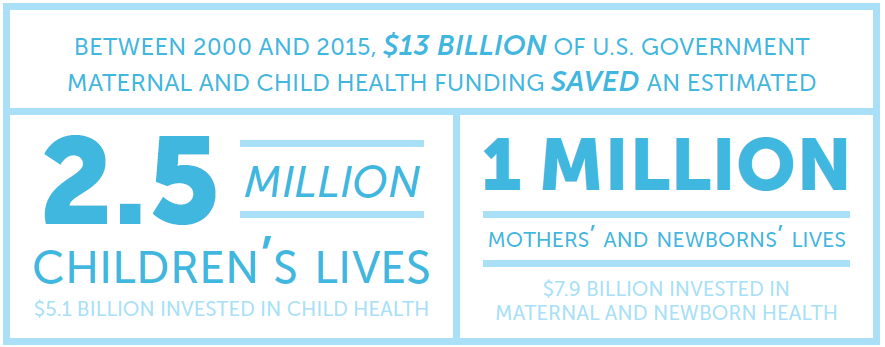CSIS Women’s and Family Health Task Force uses IHME research to call for major US initiative to improve health of adolescent girls and young women
Published March 22, 2017
On March 21, 2017, the Center for Strategic and International Studies’ (CSIS) Task Force on Women’s and Family Health outlined a road map for the Trump administration to improve the lives of adolescent girls and young women in 13 low-income countries, using IHME’s research to make their case.
Led by Helene Gayle, CEO of McKinsey Social Initiative, and John Hammergren, CEO of McKesson Corporation, and including representatives from the public and private sector, the Task Force launched its findings in a report entitled Her Health, Her Lifetime, Our World: Unlocking the Potential of Adolescent Girls and Young Women and held a launch event at CSIS headquarters featuring Task Force members such as Senators Susan Collins (R-ME) and Jeanne Shaheen (D-NH), Steve Davis (President and CEO of PATH), Lisa Carty (Director of US Liaison Office for UNAIDS), Michael Gerson (Senior Adviser of the ONE Campaign), Ezekiel Emanuel (Vice Provost for Global Initiatives and Chair of the Department of Medical Ethics and Health Policy at the University of Pennsylvania) and J. Stephen Morrison (Senior Vice President and Director, CSIS Global Health Policy Center).
The Task Force report stresses that their proposed initiative builds on the success of previous US investments in global health worldwide. The report notes that the “returns [on these investments] have been profound…. In the period 2000–2015, US government funding for maternal and child health also saved the lives of an estimated 2.5 million children and 1 million mothers and newborns.”

Graphic from Task Force report featuring IHME’s findings
This information comes directly from research that IHME carried out for the Task Force based on an analysis previously published in The Lancet, “Keeping score: fostering accountability for children’s lives,” authored by IHME Director Christopher Murray and Ray Chambers, the United Nations Secretary-General's Special Envoy for Health in Agenda 2030 and for Malaria. Professor Murray presented these findings at two Task Force meetings in 2016. IHME also produced an infographic, published on the Task Force’s website, summarizing these findings.
Representatives Mike Quigley (D-IL) and Dan Donovan (R-NY), who are members of the Task Force, wrote an op-ed in The Hill, entitled “Strategic investment in low-income countries can help the health, education of young girls.” They also used IHME’s findings (indicated in bold) to advocate for strategic investments in the health of adolescent girls and young women: “In 2003, President George W. Bush launched the President’s Emergency Plan for AIDS Relief (PEPFAR), followed by the President’s Malaria Initiative (PMI) in 2005, with expanded US support for maternal, newborn, and child survival programs and continued support for family planning and reproductive health…. The Obama administration subsequently continued and further developed each of these critical efforts. The returns on these investments have been profound, measured in millions of lives saved and improved stability, governance, and economic growth.”
In its report, the Task Force emphasizes that this initiative represents a “chance to make history” and can harness the excitement and energy generated by Family Planning 2020, the Lancet commission on adolescent health and well-being, the Sustainable Development Goals (SDGs), and the UN Secretary General’s Global Strategy for Women’s, Children’s, and Adolescents’ Health.